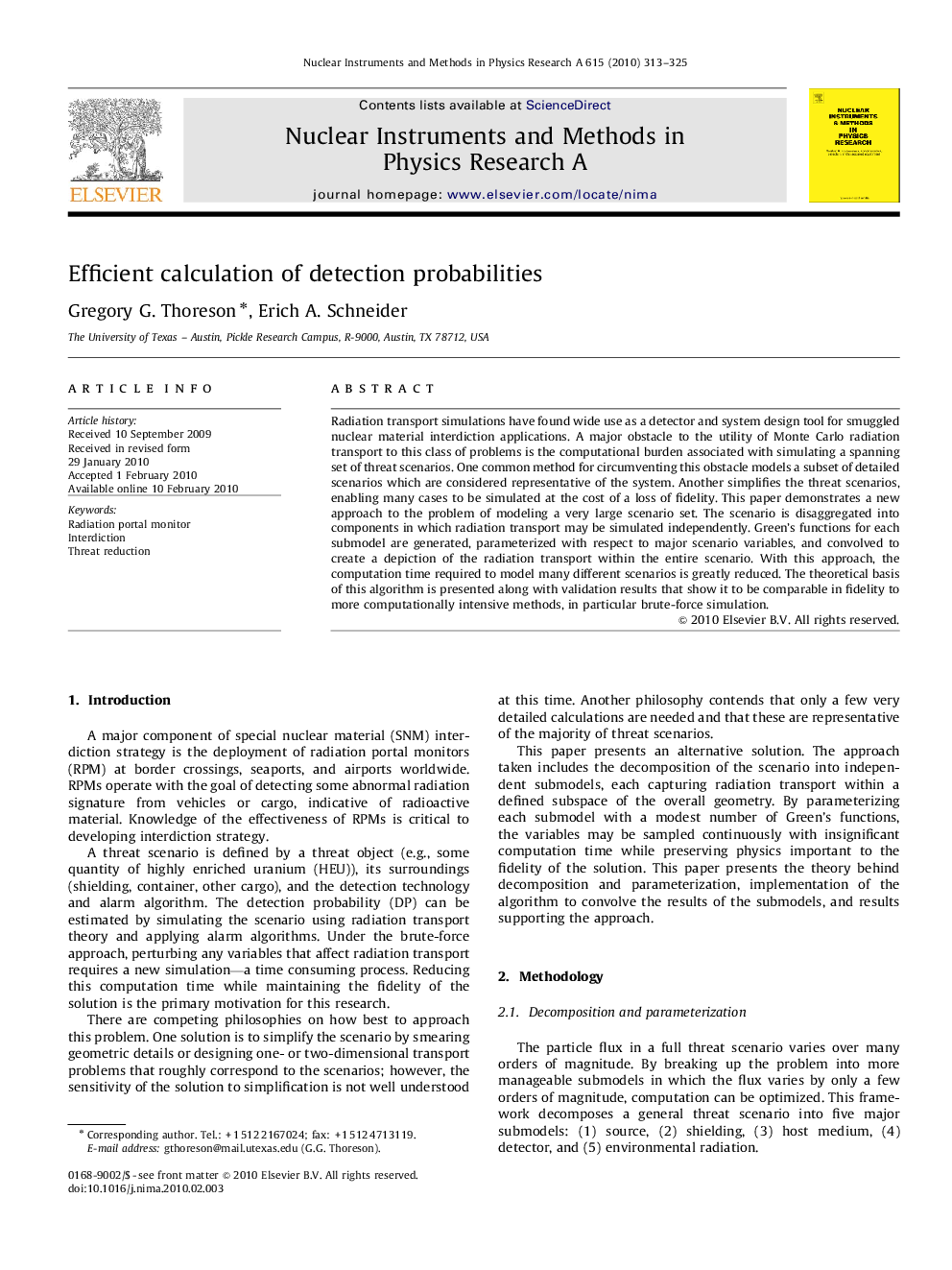| Article ID | Journal | Published Year | Pages | File Type |
|---|---|---|---|---|
| 1826751 | Nuclear Instruments and Methods in Physics Research Section A: Accelerators, Spectrometers, Detectors and Associated Equipment | 2010 | 13 Pages |
Radiation transport simulations have found wide use as a detector and system design tool for smuggled nuclear material interdiction applications. A major obstacle to the utility of Monte Carlo radiation transport to this class of problems is the computational burden associated with simulating a spanning set of threat scenarios. One common method for circumventing this obstacle models a subset of detailed scenarios which are considered representative of the system. Another simplifies the threat scenarios, enabling many cases to be simulated at the cost of a loss of fidelity. This paper demonstrates a new approach to the problem of modeling a very large scenario set. The scenario is disaggregated into components in which radiation transport may be simulated independently. Green's functions for each submodel are generated, parameterized with respect to major scenario variables, and convolved to create a depiction of the radiation transport within the entire scenario. With this approach, the computation time required to model many different scenarios is greatly reduced. The theoretical basis of this algorithm is presented along with validation results that show it to be comparable in fidelity to more computationally intensive methods, in particular brute-force simulation.
